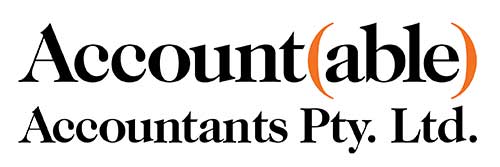EOFY CHECKLIST FOR BUSINESS

Getting your business’s end of financial year work done smoothly is no small task. This handy checklist offers a quick overview of the key processes and major to-do items.
Review your recordkeeping processes
A non-negotiable aspect of EOFY means checking all reports and records are compliant with the Australian Tax Office (ATO).
The ATO requires businesses to keep records for at least five years, while at the same time more businesses are choosing to go paperless. This is something to consider when changing solutions providers or acquiring new technology solutions.
Check you Business Activity Statements
BAS are designed to help you stay on top of your business taxes on a regular basis and, as such, this is the first key area of concern to tick off your EOFY list.
Make sure your BAS Lodgements are accurate and up-to-date. If not, attend to your lodgements and arrange an ATO payment plan where necessary to help get you back up to speed in the next six months or so.
Prepare Taxable Payments Report (If Relevant)
Taxable Payments Annual Report (TPAR) is a key ATO reporting requirement for many organisations that make payments to contractors or subcontractors.
In recent times, the Government has expanded the list of industry sectors that are required to lodge a TPAR via the Taxable Payments Reporting System (TPRS). Currently, that list includes:
- Building and construction
- Government grant providers
- Courier services
- Cleaning services
- Road freight
- IT services
- Security services
Finalise Payroll and Super Obligations
When it comes to reporting payroll tax and super, employers must use Single Touch Payroll (STP) to automatically deliver this information to the ATO.
A recent expansion of STP, known as STP Phase 2, sees employers delivering even more information to government agencies in this way. Given the mandatory start date for Phase 2 reporting is 1 January 2022, be sure to triple check your STP reporting is up to scratch
Reconcile your payroll and get ready to provide 2022 Income Statements to your employees, making sure that salary sacrifice superannuation contributions (RESC) and certain reportable fringe benefits are being handled correctly.
You will have up until 14 July to ‘finalise’ your employees’ EOFY payroll information through your STP-enabled payroll software – but this can be finalised as soon as you have reconciled the information and are happy with its completeness and accuracy, so no need to hold off on this one.
Take Stock – Inventory, asetts and liabilities
If your business carries stock, the stocktake of inventory should be completed by 30 June 2023, so decide on a suitable date and get that marked in your diary. If you have adjusted stock quantities and identified spoilage in your inventory, this should be adjusted as at 30 June 2023 to ensure it is reflected in the 2022/23 accounts.
If your business has substantial plant and equipment and you maintain an asset register, review this register and record any adjustments including description, location, quantity and damage/obsolescence and provide it to your accountant or bookkeeper so that any changes are reflected in your 2022/23 accounts.
Complete reconciliations for 2022/2023
Reconciliation is a process whereby a business owner, manager or bookkeeper compares actual transactions against supporting documentation in order to identify discrepancies, errors or any potentially nefarious activities.
This is an important step in a business’s EOFY processes as it allows management to identify any particular problems before reporting to the ATO, and so giving enough time to adjust or rectify as required.
Review your Balance Sheet and Profit and Loss Statement to show you have completed the following tasks:
- Bank accounts, petty cash, credit cards, loans and HP/chattel mortgages (monthly repayments on loans for fleet vehicles) are reconciled
- Compare your Accountants Receivables and Payables Reports to amounts shown on the Balance Sheet to ensure none are ‘out of balance’
- GST and PAYG withholding accounts are reconciled to the June BAS
- Wages and superannuation in the Profit and Loss report are reconciled to the PAYG Payment Summaries
- Amounts in suspense have been allocated to the appropriate ledger account or, if unsure, complete a note in the memo to assist your accountant or bookkeeper determine the correct treatment
- Personal expenses have not been claimed as business expenses
- Material differences to the prior year can be properly explained
